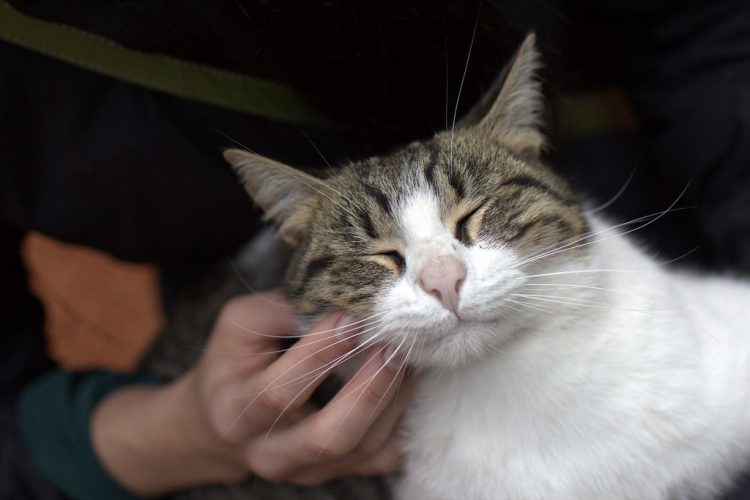First Time Cat Owner Checklist: Avoid These 20 Common Mistakes
Discover essential tips in our first time cat owner checklist to avoid common mistakes and ensure a smooth transition for your new feline friend.

This first time cat owner checklist and pet health content has been thoroughly reviewed and approved by a veterinarian.

- First Time Cat Owner Checklist: Common Mistakes to Avoid
- First Time Cat Owner Checklist: Essential Health and Training Tips
- First Time Cat Owner Checklist: Vital Health and Care Tips
- First Time Cat Owner Checklist: Safety and Interaction Tips
- First Time Cat Owner Checklist: Health and Safety Considerations
- First Time Cat Owner Checklist: Understanding Feline Behavior and Health
Don’t Guess When It Comes To Your Pet’s Care


Don’t Guess When It Comes To Your Pet’s Care
First Time Cat Owner Checklist: Common Mistakes to Avoid
Cats are incredibly rewarding pets to have in your family, but they require more work than many first-time cat owners might expect. Despite the common misconception that cats are completely independent, they need attention, care, and proper planning. First-time cat owners often make several mistakes that can affect their cat’s well-being.
Here are some common mistakes included in our first time cat owner checklist:
- Bringing a cat home on impulse without proper preparation
- Underestimating the time and effort needed to care for a cat
- Assuming that cats can thrive without human interaction
- Failing to set up a comfortable and safe environment for the cat
This checklist will help you avoid these pitfalls and ensure a smooth transition for your new feline friend.
First Time Cat Owner Checklist: Essential Health and Training Tips
1. No Parasite Control
While most cat owners are familiar with fleas, it’s crucial to remember that other pests like tapeworms, mites, hookworms, roundworms, ticks, and even heartworms can affect your cat. Heartworm treatment options are limited for cats and are not as treatable as they are for dogs.
- Some of these parasites can be transmitted to humans, making preventive care essential.
- Talk with your veterinarian about preventive measures based on your cat’s lifestyle and location (e.g., indoor vs. outdoor cats).
Learn more about ticks and heartworms to better protect your cat.
2. Not Spaying or Neutering Your Cat
Kitten season isn’t just a myth—it happens every year, leading to overcrowded shelters filled with cats and kittens in need of homes. This situation can often be prevented by timely spaying or neutering.
- Cats can become pregnant as early as 4–6 months of age, so don’t delay.
- Discuss the procedure with your vet to prevent unintended litters.
Be prepared for kitten season and understand what to do if you find abandoned kittens. Ensure you discuss spaying or neutering with your vet.
3. No Litter Box Training
Not all cats instinctively use a litter box, especially stray or feral cats that may be unfamiliar with it. Some cats may need training to associate the litter box with waste, while others might avoid it due to medical or behavioral issues.
- Work with your vet to rule out any underlying health problems.
- Start training your cat to use the litter box as soon as possible.
Here’s how to handle a cat that refuses to use the litter box.

First Time Cat Owner Checklist: Vital Health and Care Tips
4. Ignoring the Claws
A cat’s claws are sharp and can grow to painful lengths without proper care. To avoid this, implement a grooming regimen as early as possible. Regular trimming is essential to keep your cat comfortable and prevent any issues related to overgrown claws.
- For best results, wait until your cat is tired or has just woken from a nap before trimming.
- Remember, declawing is not recommended as it is painful for the cat and illegal in some areas.
Learn how to maintain your cat’s claws with regular trimming and a proper grooming regimen. Read more about why declawing is not recommended.
5. Buying Cheap Food
Just because a cat food brand like Purr-Paw Chow is on sale for $1 per bag doesn’t mean it’s good for your cat. High-protein and low-carbohydrate ingredients are crucial for your cat’s health.
- A lack of necessary nutrients and a high-carb diet can lead to health problems and obesity.
Check with your vet to ensure you’re providing a balanced diet that meets your cat’s nutritional needs.
6. Cleaning the Litter Box Just Once a Month
Cats are very clean animals, and they appreciate a clean area for their waste. Cleaning the litter box once a month is not enough to keep your cat happy and healthy.
- Check the litter box at least once a day and keep it clean and fresh.
- If you introduce new types of litter, do so gradually to avoid upsetting your cat.
Learn more about the importance of keeping the litter box clean and fresh.
7. Ignoring Grooming
While cats spend much of their time cleaning themselves, there are still areas that need your attention. In addition to keeping the claws trimmed, make sure to regularly check and clean your cat’s ears and teeth, and brush their coat.
- Groom your cat at least once a week to reduce the risk of ear mites, dental problems, and dander, as well as the amount of fur your cat ingests.
- Bathing may be necessary if your cat’s coat gets muddy or sticky.
Understand why cats sleep so much and when bathing is necessary.
8. Optional Vaccinations
Vaccinations come with both risks and benefits, and some are required by law depending on your location. Almost all U.S. states require rabies vaccinations, so check with your vet and local laws to determine if the vaccine is required every year or once every three years.
- Other necessary vaccinations may include those for distemper, herpes, and other viruses.
- Additional vaccines are available for conditions such as leukemia, bordetella, and feline immunodeficiency virus.
Learn more about the risks and benefits of vaccinations and other essential vaccines.
9. Ignoring Illnesses and Injuries
When your cat becomes sick or injured, it’s crucial to have them examined by your veterinarian immediately. Some minor injuries or illnesses can turn serious if left untreated.
- Don’t take chances—be proactive in providing the best quality of care for your pet.
- Catching major illnesses early can be both cost-effective and beneficial for your cat’s health.
10. Endless Food
Cats can become overweight if food is always available. It’s important to regulate their food intake to prevent obesity.
- Read the labels and consult with your vet to determine the right amount of food for your cat.
Understand how to prevent your cat from becoming overweight by managing their diet properly.

First Time Cat Owner Checklist: Safety and Interaction Tips
11. Cats Belong Outdoors
A common reason people leave cats outdoors is to reduce spraying behavior because they’re not neutered. The solution? Get your cat fixed to prevent overpopulation and keep them safe.
- Outdoor dangers are numerous: cars, rabies from raccoons, antifreeze spills, or even the risk of getting locked in a building.
- If you allow your cat outdoors, ensure they are spayed or neutered and up-to-date on vaccines to protect them from these hazards.
Learn more about why it’s important to think twice before you leave cats outdoors.
12. Cats Can Eat Anything
It’s a misconception that cats can eat anything. Many foods, plants, and other items are toxic to cats and can cause severe illness or even death.
- Giving cats the wrong medications, including those designed for dogs or humans, is a leading cause of death among household pets.
- Always use medications specifically designed for cats to ensure their safety.
Check out this list of toxic plants and foods to keep your cat safe.
13. The Other Pets Won’t Mind
When introducing a new cat to a household with existing pets, it’s essential to properly socialize them to avoid conflicts.
- Some small animals and rodents may be seen as prey by your new cat, so they need to be secured and supervised regularly.
- Be cautious with dogs that have high prey drives, as they might not be trustworthy around cats. Even if the dog doesn’t attack, the cat could still react aggressively.
Discover tips on how to ensure your cats and dogs can be friends through proper introductions and supervision.

First Time Cat Owner Checklist: Health and Safety Considerations
14. My Indoor Cat Doesn’t Need a Checkup
The truth? Even indoor cats need regular checkups. These visits allow the vet to evaluate their coat, ears, teeth, eyes, skin, blood work, weight, and other health concerns.
- Ignoring regular checkups can allow hidden illnesses to go unnoticed, which will only increase your pet’s problems—and your expenses down the line.
15. My Cat Will Never Get Lost
It’s a common misconception that outdoor cats will always stay close to home. However, they can easily get distracted and wander farther than they realize, making it difficult for them to find their way back.
- To prevent this, always have a collar and tag on your cat for easy identification.
- Another effective option is microchipping, which is inexpensive and ensures your pet’s return if they are lost and scanned.
16. Pet Meds Are Good for Any Pet
This is a dangerous misconception. Many medications and treatments designed for dogs or humans can be deadly to cats. Even the wrong type or dosage of flea medications or collars can harm or kill a cat.
- Always read the label carefully before administering any medication to ensure it is specifically made for cats.
17. She’s Just Acting Funny
If you notice a change in your cat’s attitude, appetite, or litter box habits, these could be signs of bigger problems.
- Check to see if you’ve made any recent changes in food, litter, furniture, or other household items that might have disrupted your cat’s routine.
- If nothing stands out, it’s time to make a vet trip to get your cat checked out.
Sometimes, changes in litter box behavior can signal underlying health issues. Learn more about this at litter box health.
Sometimes cats and dogs really do get along:
First Time Cat Owner Checklist: Understanding Feline Behavior and Health
18. Cats Always Vomit
It’s a misconception that cats should vomit hairballs all the time. While occasional hairballs are normal, frequent vomiting could indicate a more serious problem with the digestive system.
- Additional grooming attention from you can help reduce the frequency of hairballs.
- If your cat is vomiting regularly, have the veterinarian check their stomach and intestinal tract.
19. Training Is Unnecessary
Training is essential for cats, just as it is for dogs. Cats learn best through positive reinforcement, and rewarding a desired behavior makes them more likely to repeat it.
- Try training your cat to avoid undesirable behaviors, like scratching up the furniture, by using positive reinforcement.
Learn more about how to train your cat to not scratch up the furniture.
20. All Cats Are Affectionate
While certain cat breeds can be very friendly, not all cats will be affectionate. Personality is influenced by more than just genetics, so it’s important to be realistic and patient.
- If you’re getting a cat just to have a snuggle buddy, keep in mind that each cat’s personality is unique. If constant affection is what you seek, you might be better off with a stuffed teddy bear.
Essential Supplies for First-Time Cat Owners
Before bringing your new feline friend home, it’s important to gather all the essential supplies. Having everything ready in advance ensures a smooth transition for both you and your cat. This first time cat owner checklist includes all the basic items you’ll need:
- Food and Water Bowls: Opt for stainless steel or ceramic bowls to prevent allergies and keep your cat’s feeding area hygienic.
- High-Quality Cat Food: Choose a high-protein, low-carbohydrate diet that meets your cat’s nutritional needs.
- Litter and Litter Box: Select a litter box that’s large enough for your cat and a litter that suits their preferences.
- Cat Bed: Provide a cozy bed where your cat can feel safe and comfortable.
- Scratching Post: Prevent damage to your furniture by offering a sturdy scratching post.
Having these essential supplies from the start will help your cat feel at home and reduce stress during the transition.
Creating a Safe and Comfortable Home Environment
Once you’ve gathered the essential supplies from the first time cat owner checklist, the next step is to create a safe and comfortable home environment for your new cat. A well-prepared space will help your cat adjust more quickly and avoid unnecessary stress.
- Designate a Quiet Space: Set up a quiet area where your cat can retreat to if they feel overwhelmed. This could be a small room or a cozy corner in your home.
- Cat-Proof Your Home: Ensure that all potential hazards, such as toxic plants, electrical cords, and small objects that could be swallowed, are out of reach.
- Provide Vertical Spaces: Cats love to climb and perch. Offer shelves or a cat tree where your cat can observe their surroundings from a height.
- Introduce Gradually: When bringing your cat home, introduce them to one room at a time, allowing them to explore at their own pace.
By following this part of the first time cat owner checklist, you’ll create an environment where your cat feels secure and can thrive.
Frequently Asked Questions (FAQ)
What does a first time cat owner need?
A first time cat owner needs essential supplies like food and water bowls, a litter box, scratching post, and high-quality cat food.
What is the first thing you should do when you get a cat?
The first thing you should do when you get a cat is to create a quiet, safe space where they can comfortably adjust to their new environment.
What to do with a cat when you first bring it home?
When you first bring a cat home, allow them to explore one room at a time, gradually introducing them to the rest of your home.
What is the best age cat for first time owner?
The best age for a first time cat owner is typically a young adult cat, as they are often more settled and easier to care for than kittens.
References
- “The Ultimate Cat Supply Checklist.” Safe Haven for Cats. https://www.safehavenforcats.org/news/the-ultimate-cat-supply-checklist/
- “Canadian Tire.” Petco. https://www.petco.com/shop/en/petcostore/c/canadian-tire
- “New Cat Checklist.” The New York Times Wirecutter. https://www.nytimes.com/wirecutter/reviews/new-cat-checklist/








